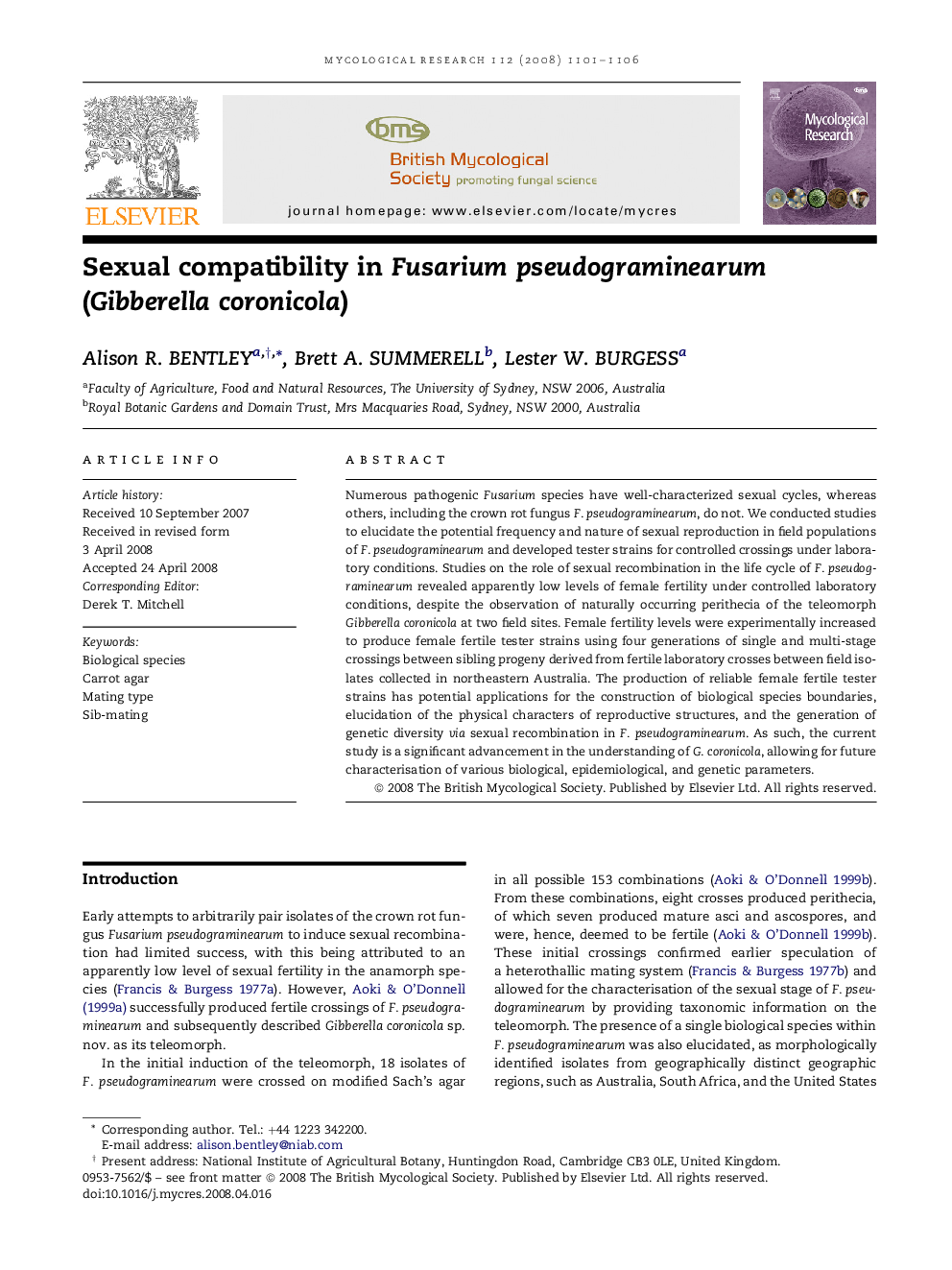| Article ID | Journal | Published Year | Pages | File Type |
|---|---|---|---|---|
| 4357722 | Mycological Research | 2008 | 6 Pages |
Abstract
Numerous pathogenic Fusarium species have well-characterized sexual cycles, whereas others, including the crown rot fungus F. pseudograminearum, do not. We conducted studies to elucidate the potential frequency and nature of sexual reproduction in field populations of F. pseudograminearum and developed tester strains for controlled crossings under laboratory conditions. Studies on the role of sexual recombination in the life cycle of F. pseudograminearum revealed apparently low levels of female fertility under controlled laboratory conditions, despite the observation of naturally occurring perithecia of the teleomorph Gibberella coronicola at two field sites. Female fertility levels were experimentally increased to produce female fertile tester strains using four generations of single and multi-stage crossings between sibling progeny derived from fertile laboratory crosses between field isolates collected in northeastern Australia. The production of reliable female fertile tester strains has potential applications for the construction of biological species boundaries, elucidation of the physical characters of reproductive structures, and the generation of genetic diversity via sexual recombination in F. pseudograminearum. As such, the current study is a significant advancement in the understanding of G. coronicola, allowing for future characterisation of various biological, epidemiological, and genetic parameters.
Keywords
Related Topics
Life Sciences
Agricultural and Biological Sciences
Agricultural and Biological Sciences (General)
Authors
Alison R. Bentley, Brett A. Summerell, Lester W. Burgess,
